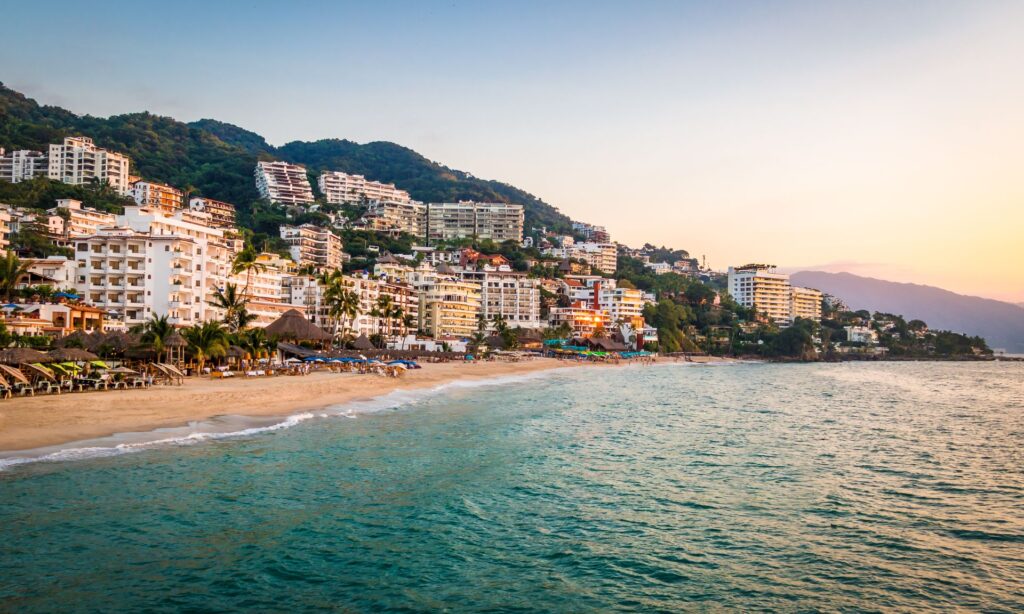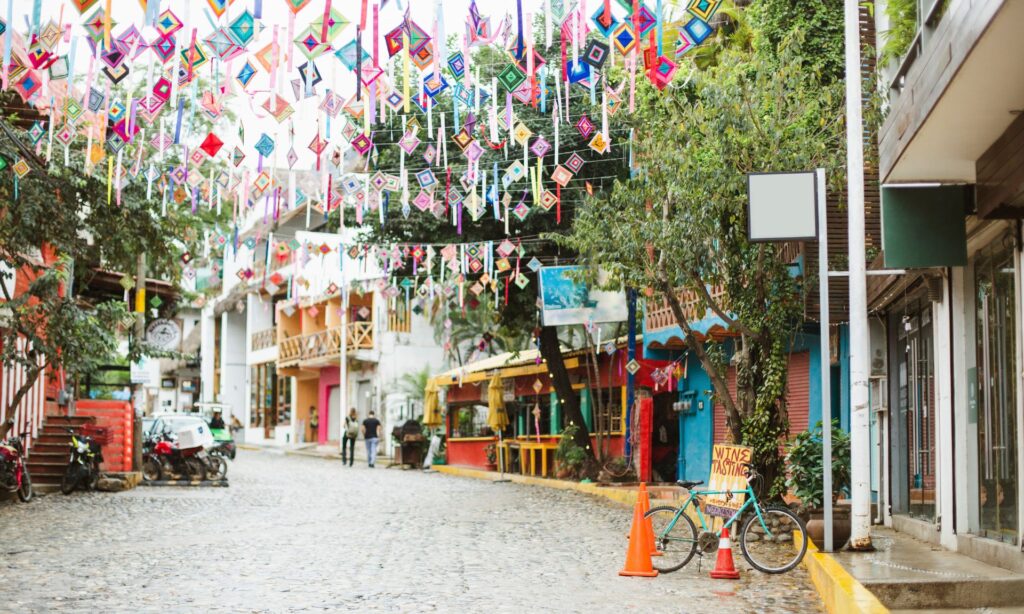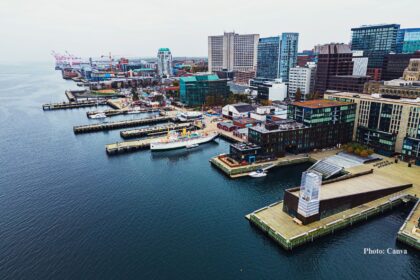Introduction
Mexico, with its stunning coastlines along the Pacific Ocean, Gulf of Mexico, and the Caribbean Sea, boasts a plethora of beach towns that are not only perfect for a relaxing vacation but also ideal for those seeking a tranquil and vibrant place to call home. Whether you’re a sunseeker, a water sports enthusiast, or simply looking for a laid-back lifestyle, Mexico offers a variety of beach towns to suit different preferences. In this guide, we’ll explore some of the best beach towns in Mexico that are not only fantastic tourist destinations but also appealing places to consider for long-term living.
Tulum, Quintana Roo

Tulum, located along the Riviera Maya on the Yucatán Peninsula, is renowned for its pristine beaches, ancient Mayan ruins, and bohemian atmosphere. The town’s eco-friendly resorts and boutique hotels have made it a popular destination for both tourists and expats. Tulum offers a unique blend of natural beauty, cultural richness, and modern amenities.
Puerto Vallarta, Jalisco

Nestled between the Sierra Madre Mountains and the Pacific Ocean, Puerto Vallarta is a picturesque beach town that combines traditional Mexican charm with a vibrant arts scene. The Malecón, a seaside promenade, is lined with shops, restaurants, and galleries. The town’s diverse expat community enjoys the warm climate, friendly locals, and a plethora of outdoor activities.
Sayulita, Nayarit

Sayulita, a bohemian surf town on the Pacific Coast, has become a haven for surfers, artists, and nature lovers. Its laid-back vibe, colorful streets, and excellent surf conditions attract visitors from around the world. With a growing expat community, Sayulita offers a relaxed lifestyle where the sound of waves and rustling palm trees becomes the soundtrack of everyday life.
READ ALSO: Mexico Backpacking Guide: Your Guide to Backpacking Mexico, Tips, Places to Visit, and More
Playa del Carmen, Quintana Roo

Just south of Cancun, Playa del Carmen is a lively beach town with a cosmopolitan atmosphere. The town’s famous Fifth Avenue is a bustling pedestrian street filled with shops, restaurants, and nightlife. Playa del Carmen provides a balance between modern amenities and the charm of a coastal town, making it a popular choice for expats seeking both convenience and culture.
Mazatlán, Sinaloa

Mazatlán, often referred to as the “Pearl of the Pacific,” offers a rich cultural experience along with its sandy beaches. With a historic center, known as the “Old Town,” filled with colonial architecture, plazas, and seafood markets, Mazatlán provides a unique blend of history and coastal beauty. The town’s diverse neighborhoods cater to various preferences, making it suitable for both vacationers and long-term residents.
Frequently Asked Questions about Beach Towns in Mexico
Q: What makes Mexico’s beach towns unique?
A: Mexico’s beach towns are unique due to their diverse offerings, combining stunning natural beauty with rich cultural experiences. Each town has its own distinct charm, from the bohemian atmosphere of Tulum to the traditional Mexican charm of Puerto Vallarta.
Q: Are these beach towns safe for tourists and expats?
A: Generally, Mexico’s beach towns are safe for tourists and expats. However, it’s essential to exercise the same caution as you would in any travel destination. Stay informed about local safety guidelines, be aware of your surroundings, and choose well-established areas for accommodation.
Q: What activities can I enjoy in these beach towns?
A: The activities vary by town but often include water sports, beachcombing, exploring local markets, and enjoying vibrant nightlife. Many beach towns also offer cultural events, festivals, and opportunities for outdoor adventures like hiking and snorkeling.
Q: How is the cost of living in these beach towns compared to other parts of Mexico?
A: The cost of living in beach towns can vary, but in general, it may be slightly higher than in inland areas. Popular tourist destinations often have a range of options, from budget to upscale, allowing for flexibility based on individual preferences and budgets.
Q: Is it easy to find amenities and services in these beach towns?
A: Yes, most beach towns in Mexico have a range of amenities and services, including supermarkets, medical facilities, and a variety of restaurants. Larger towns like Playa del Carmen and Puerto Vallarta offer a cosmopolitan experience with a wide array of services.
Q: How accessible are these beach towns for expatriates?
A: Many beach towns in Mexico are quite accessible for expatriates, with established expat communities, English-speaking services, and a welcoming local population. It’s common for foreigners to find resources and support networks to ease the transition to coastal living.
Q: Are there visa requirements for long-term stays in Mexico?
A: Yes, there are visa requirements for long-term stays in Mexico. The specifics depend on your nationality and the purpose of your stay. It’s advisable to check with the Mexican consulate or embassy for up-to-date information on visa requirements and application processes.
Q: How is the healthcare infrastructure in these beach towns?
A: Many beach towns in Mexico, especially those popular among expats, have well-developed healthcare infrastructure. Facilities range from local clinics to international-standard hospitals. Expatriates often find quality healthcare services at a fraction of the cost in their home countries.
Q: Can I find eco-friendly and sustainable options in these beach towns?
A: Yes, several beach towns in Mexico, such as Tulum, prioritize eco-friendly and sustainable practices. From eco-resorts to locally-owned businesses focusing on sustainability, there are options for environmentally conscious individuals seeking a green lifestyle.
Q: How do I choose the right beach town for me?
A: Choosing the right beach town depends on your preferences. Consider factors such as climate, cultural activities, cost of living, and the overall lifestyle you desire. Spending some time in potential locations before making a decision can provide a firsthand experience to help you choose the perfect beach town for your needs.
Conclusion
In conclusion, Mexico’s beach towns offer a tapestry of experiences that cater to a diverse range of preferences, making them not only enticing vacation spots but also desirable places for long-term living. Whether you’re drawn to the bohemian vibes of Tulum, the traditional charm of Puerto Vallarta, or the surf culture of Sayulita, these towns encapsulate the beauty, warmth, and cultural richness that define coastal living in Mexico.
The safety of these beach towns, the plethora of activities available, and the accessibility for expatriates make them stand out as attractive options. From the azure waters of the Caribbean to the Pacific’s rolling waves, each beach town paints a unique picture, inviting residents and visitors alike to partake in a lifestyle that seamlessly blends relaxation with cultural exploration.
Moreover, the diverse amenities, healthcare infrastructure, and eco-friendly initiatives in certain towns underscore Mexico’s commitment to providing a well-rounded living experience. As you embark on the journey of choosing the right beach town, it’s essential to consider factors like cost of living, accessibility, and the overall atmosphere that aligns with your individual preferences.
In the end, whether you seek the tranquility of a seaside retreat, the excitement of water sports, or the vibrant energy of coastal communities, Mexico’s beach towns beckon with open arms. Each one has its own story to tell, waiting for you to become a part of the narrative, creating memories against the backdrop of sun-drenched shores and a culture as warm and inviting as the Mexican sunsets.
In another related article, Exploring Mexico’s Magnificent Pyramids on a Budget: Top 5 Ancient Wonders






